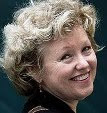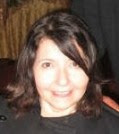My absolute favorite aspect of writing is the research phase! Interviewing people, gathering and analyzing facts, searching for information, observing animals, visiting sites, studying archives, and shooting photos (an integral part of my research) are all very exciting and great fun—and I never begin writing until I feel my research is complete. Starting the writing phase of any project is almost always the most difficult part of the process for me. While all of that new information is swirling around in my head, I usually need to go through a series of “thinking phase” behaviors to jumpstart my internal writing battery and get into the “flow.” I know I’m not alone in this—all writers have quirky things they do to get started, don’t they? Here are some of the things I do, but I also hope some of you will share your methods to get your writing juices flowing in the comment section of this blog.
• Rummage through the kitchen cupboard to look for things to eat even though I’m not really hungry.
• Clean out my underwear drawer, wash windows, pull weeds, organize my closet, and sweep the patio. I’m actually working on the book in my head while I do all of those chores, even though it may look like I’m procrastinating. (OK, perhaps I am, just a little bit.)
• Immerse myself in an experience related to the storyline. For my Hurricane Katrina dolphin book, I shut myself up in my bedroom, closed the curtains, and watched hurricane videos in the dark.
• Take extra-long showers because the opening paragraphs for many of my books have been formulated under spray of the hot water.
• Long drives in the car are also helpful. I’ve learned to write notes while keeping my eye on the road.
• Dream about the book at night with a notepad by my bed. If I’m really stuck during the day, I lie down to take a nap but my mind still works on the book, of course.
• Sit on my bed with an old-fashioned pencil and notebook, handwriting notes and doodling. Often my first line comes to me during that process.
• Stare at my computer with a 20-stick pack of gum on my desk. Gum is a good thinking tool: I pop a piece in my mouth, chew it for 30 seconds to a minute until the flavor runs out, spit it out, and then replace it with a fresh stick. I repeat this process until the entire pack is chewed. Big Red cinnamon-flavored gum works best.
• Perform personal grooming tasks while staring at the computer and thinking about the book, such as filing nails and plucking eyebrows.
• Skim through other books I’ve written and remind myself that I really do know how to write and that sooner or later I’ll start this latest book, finish it, and possibly even like it!
San Diego native Georgeanne Irvine has devoted more than three decades of her career to raising awareness about animals and wildlife conservation. By day, she is associate director of development communications for the San Diego Zoo, where she has worked for 33 years. George is also the author of more than 20 children’s books plus numerous magazine, newspaper, and Web articles. George’s most recent work is the coffee table book, The Katrina Dolphins: One-Way Ticket to Paradise, which is a true story about 8 dolphins from an oceanarium that were washed out to sea during Hurricane Katrina and dramatically rescued a few weeks later.














